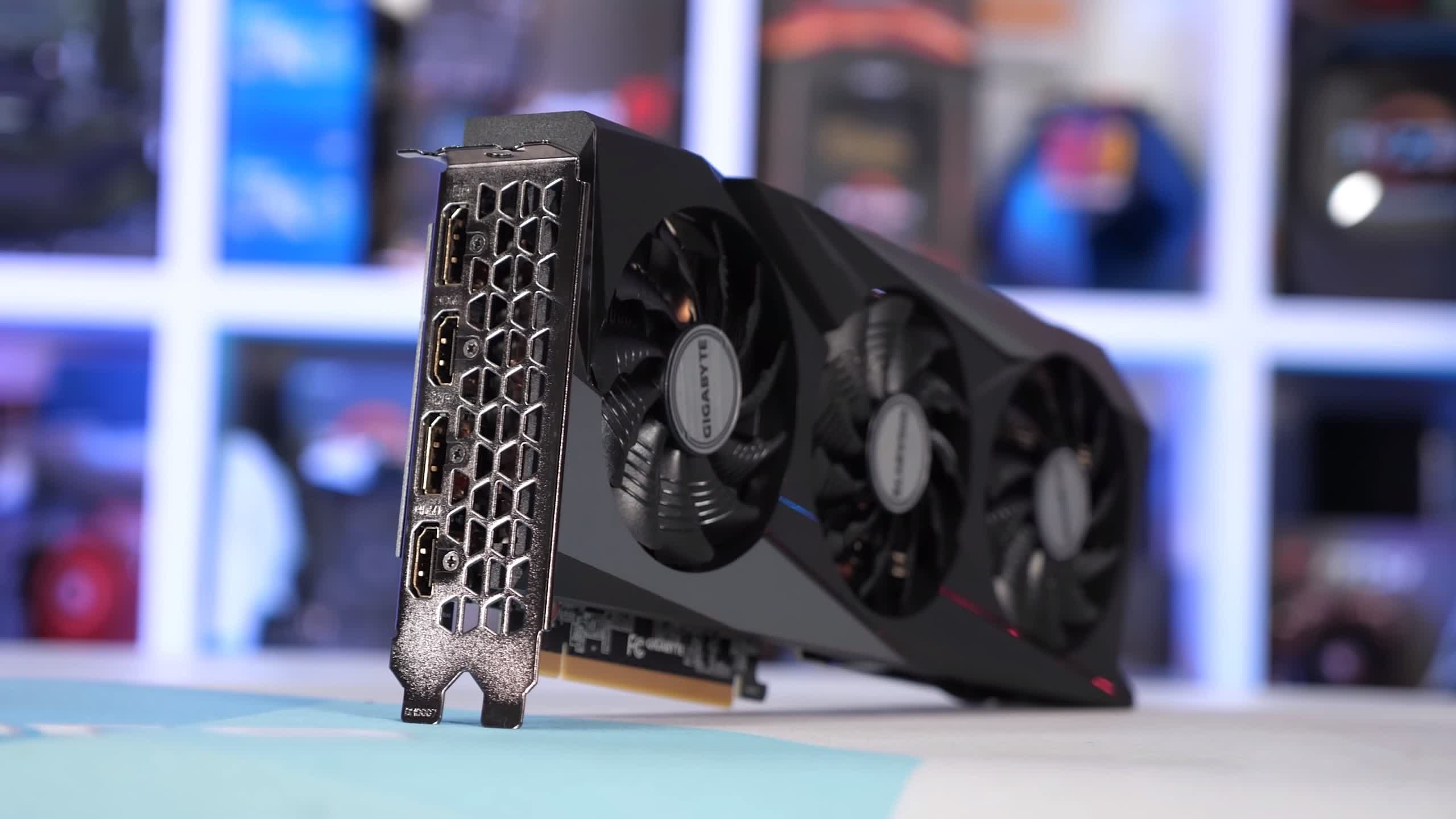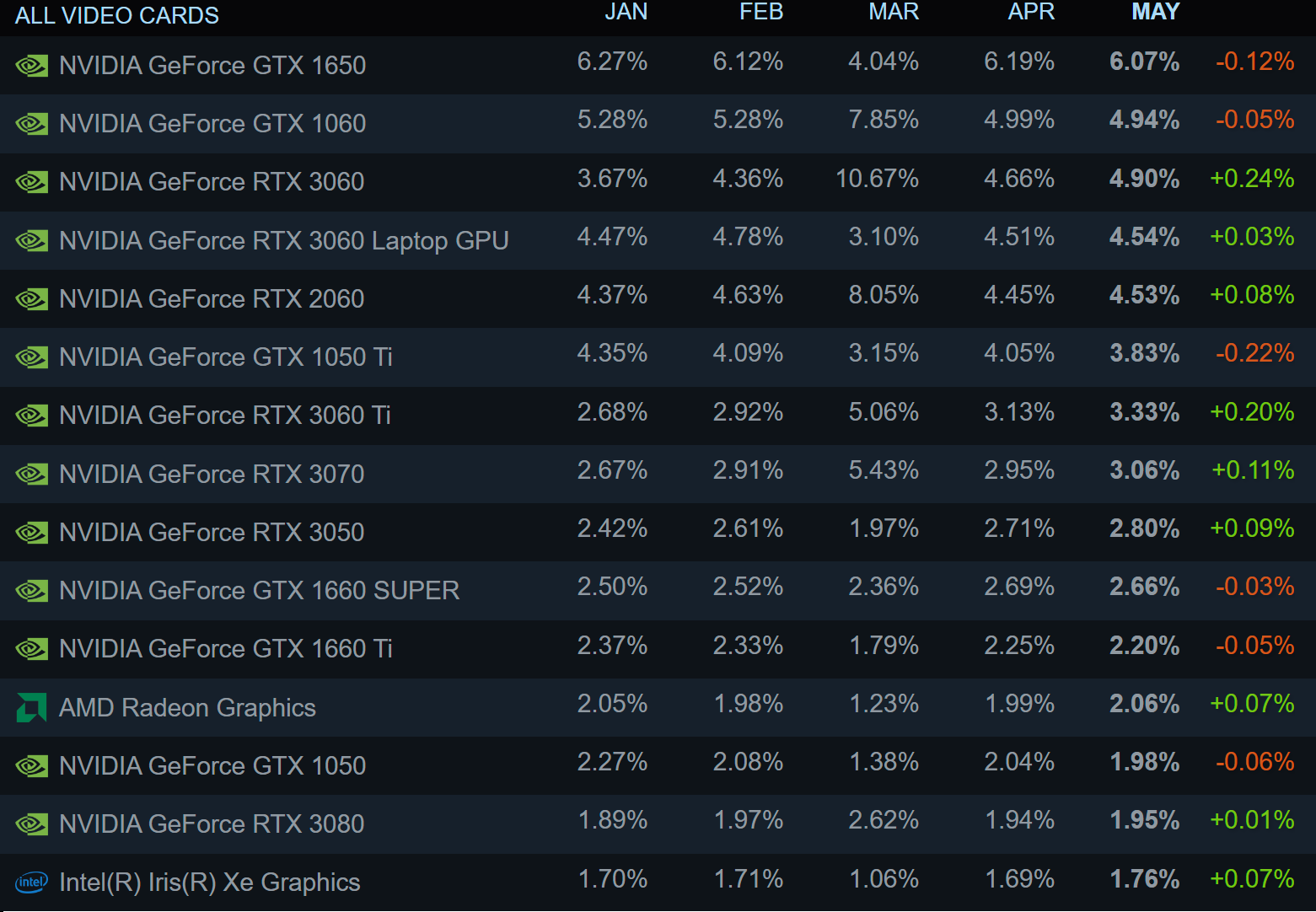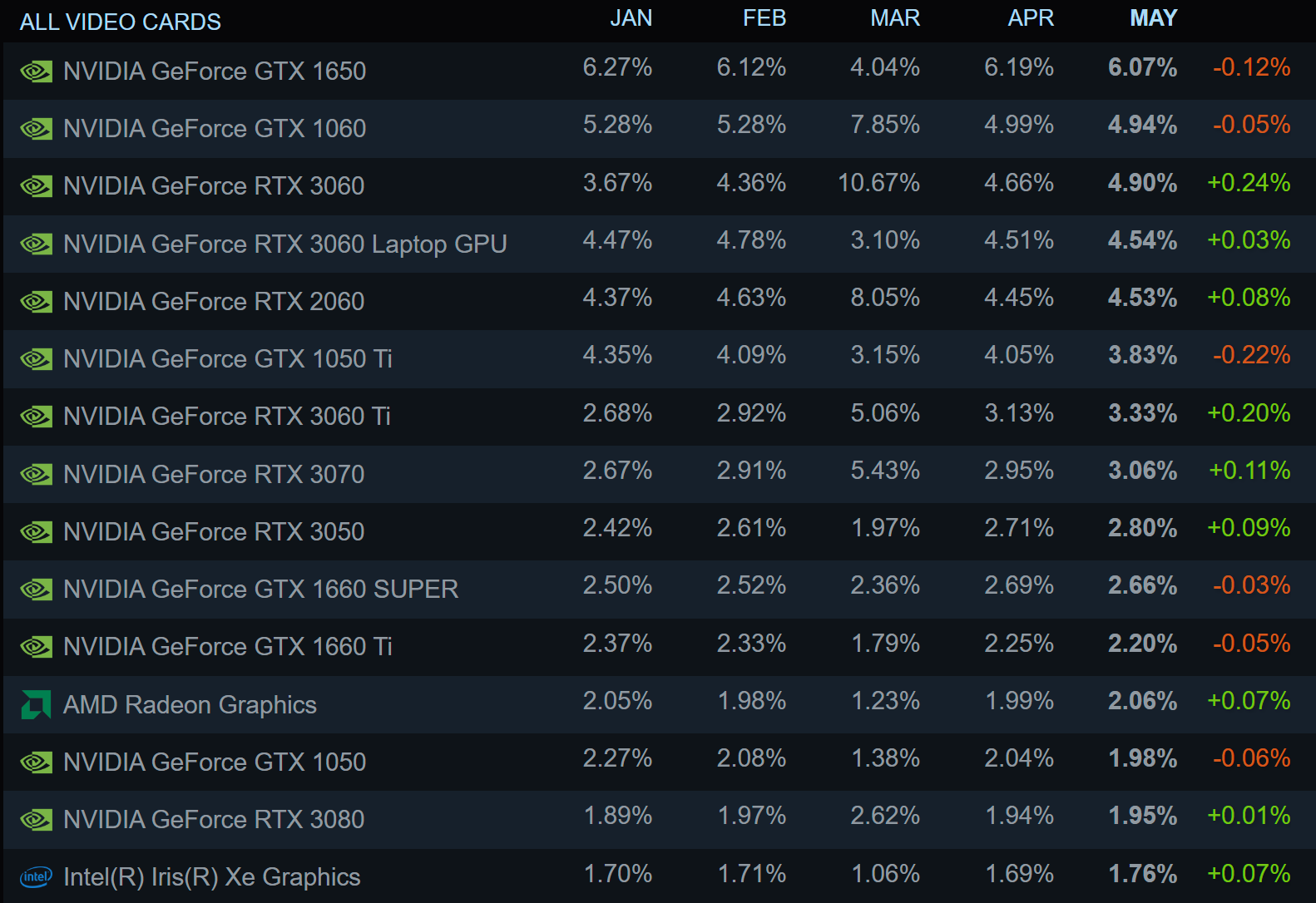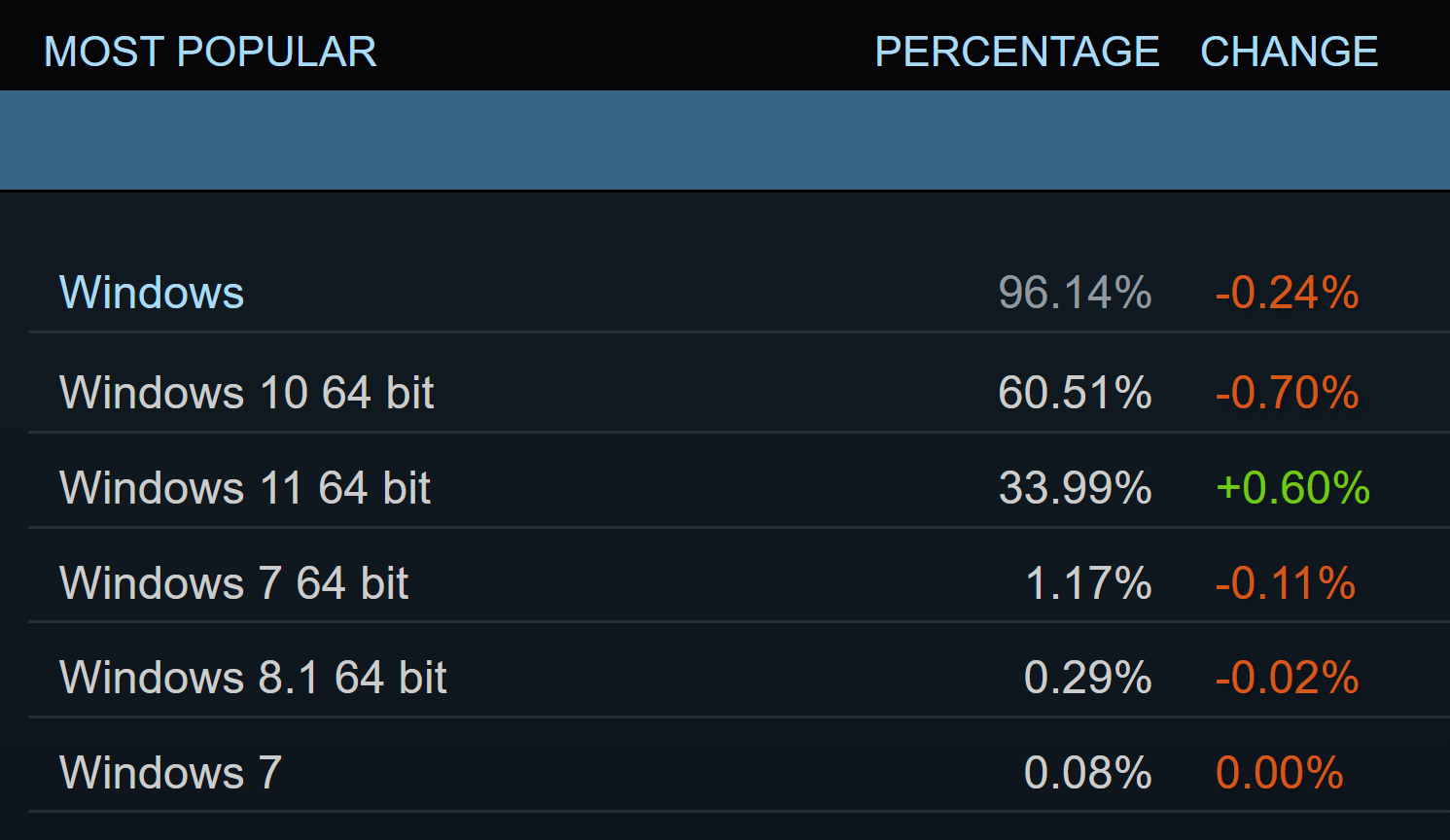In a nutshell: It's that time when Valve releases the latest Steam survey results. May was yet another great month for the RTX 3060 as it closes the gap on the GTX 1650 leader. There was also a new Lovelace entry in the main GPU chart. Elsewhere, Windows 11 might not be as popular as Microsoft would like, but the OS is doing well amongst gamers.
Once again, the RTX 3060 was the GPU that gained the most users in May, pushing its share up 0.24% to 4.9%. That puts it within touching distance of the second-place GTX 1060, while the top GTX 1650 saw its share fall 0.12%.
The RTX 3060's price-per-performance ratio is looking more appealing in the wake of expensive Lovelace releases, especially as the Ampere card keeps appearing on sale. Don't be surprised if this takes over as leader at some point - again. It was briefly number one in March when the whole Steam survey had a period of unexplained chaos when everything changed for a month.
But it wasn't all bad news for Lovelace. The RTX 4070 entered the chart with the second-highest gains of the month (0.21%). We rated the card highly, scoring it 90 in our review. Elsewhere, the RTX 4070 Ti, RTX 4080, 4060 laptop, and 4090 experienced increases, too. All the Radeon RX 6000-series cards either saw no change or lost users, while the Radeon RX 7000-series remains absent from the main chart.
AMD didn't fare too well in the CPU section, either. May was one of those months when Intel fared better, increasing its share by 0.38% to 67.52%.
Windows 11, meanwhile, continues to appear in more Steam survey participants' machines. The latest OS now has a nearly 40% share, which comes after its global share also hit an all-time high in May. Windows 10 retains a strong lead, but that's being chipped away with each passing month.
The increase in RTX 3060 owners means that a lot more people now have 12GB of VRAM in their setup. 8GB remains the most popular, though that amount continues to be insufficient for some new AAA games at higher resolutions and max settings.
Finally, the survey shows that while 1080p remains the most commonly used resolution by a large margin, it lost ground while second-place 1440p was up 0.39%.




